Catalogue > Search
Results for : Tout le catalogue
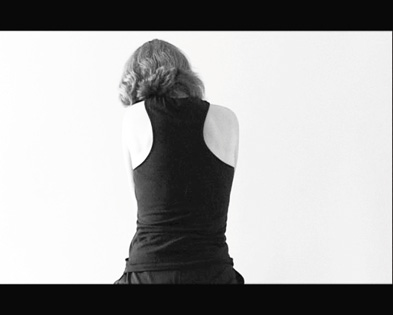
Myriam Bornand, caméra Charles Castella,son Vincent Pipponnier avec Charlotte Rampling
Future is back:les Déchirures
Video | | black and white | 1:53 | France | 2007
In this film, the theme of division is explored in three ways : the tear (the movement) - THE ACTION. The cuts (the words) - THE SOUND. And the separation between the action taking place and the sound. Charlotte Rampling sits turning back to us. We can see her tearing or cutting something imprecise. At the same time we can hear her voice but we don't know if it's a foreign language or invented words. Her voice is recorded off. The words we hear are an excerpt of the gardener's song in "Sylvie and Bruno" by Lewis Carroll. This text is told in french and english in a sliced, unstructured and clipped way, by punctual stops and resumptions. This deconstruction of the language is enough, by making us lose our bearings, to gets us lost in the understanding, even if no word is missing. At the same time, Charlotte Rampling keeps on tearing what's on her knees. The sequence ends when we hear the noise of scissors falling on the ground. Charlotte bends down slightly, the image stops on her back. Future is back.
Myriam Bornand, french-swiss artist, works and lives in Marseille, France. The general artistic process explores recurrent themes : the one and division, the center, the opposites, the stratums, the manipulation by the image, the automatism of the thought. Various techniques are used to treat these questions : collages, painting, video, writing, installations, serigraphy, gathering, photographs. The development of concepts is interlocked with the way of reproducing visually their problems. They are generally explored by series, which is the case of "Future is Back", a work composed of three parts : the Insults, the Scissors and the Tears. Exhibitions : LA PASSERELLE . 2001 . Marseille.FRANCE LES DANAÏDES. 2002 . Marseille.FRANCE LOFT 131.Installation. 2009 .Brooklyn .USA PULLMAN PALM BEACH. 2010. Marseille.FRANCE GALERIE PORTE AVION. 2010. Marseille.FRANCE GALERIE DU TABLEAU Mai 2011 Marseille. France De groupe GALERIE CHAVE .1993 . Vence FRANCE MUSÉE INGRES .1994 . « Les Récréations de la Création » Montauban.FRANCE ARTHOTHÉQUE du département de la Réunion « Aboli pas aboli » 1998.LA RÉUNION V.A.C en Février 2003 .« Hommage aux Anti-Barbares ». Ventabren .FRANCE CONCEJALIA de Educacion y Cultura : « COSLART 03 » . 2003.Coslada ESPANA . G.BLEUS 2005. « S.L.K » .Limburg. BELGIUM. MINISTERE DE LA CULTURE ET DE LA COMMUNICATION DE PARIS . 2008 « Assises »Paris.FRANCE M.A.C.A. « Assises Opéra in sedute » 2009 Acri ITALIA
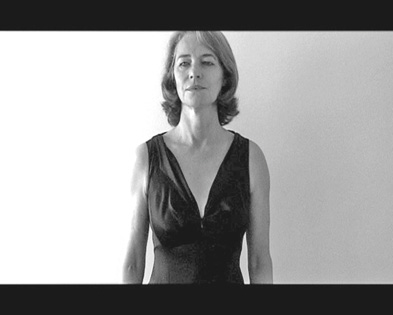
Myriam Bornand, Caméra Charles Castella,son Vincent Pipponnier avec Charlotte Rampling
Future is back:les Insultes
Video | | black and white | 1:52 | France | 0
Charlotte Rampling is standing and wearing a black dress, she seems to be at a formal party. Only her face and chest are slightly moving. Her smiling expression evoke the usual courtesy behaviour, or a few insignificant comments to an interlocutor off camera, whereas the langague she employs is violent and filthy. This video explores the principles of duality, of division using contraries. The calm and refinement of Charlotte Rampling's personality creates a gap with the violent and filthy comments she does. The chosen mode for the rosary of insults creates a gap aswell, it is rhythmed in accordance with the tibetan Mantras (syllables - prayers) repeated as chopped psalmodies. Here we find another gap : the use of a technique for different purposes than the usual ones, since it is about to pronounce secular words using the Mantras' mode, in a spirit opposite of the prayer's one.
Myriam Bornand, french-swiss artist, works and lives in Marseille, France. The general artistic process explores recurrent themes : the one and division, the center, the opposites, the stratums, the manipulation by the image, the automatism of the thought. Various techniques are used to treat these questions : collages, painting, video, writing, installations, serigraphy, gathering, photographs. The development of concepts is interlocked with the way of reproducing visually their problems. They are generally explored by series, which is the case of "Future is Back", a work composed of three parts : the Insults, the Scissors and the Tears. Exhibitions : LA PASSERELLE . 2001 . Marseille.FRANCE LES DANAÏDES. 2002 . Marseille.FRANCE LOFT 131.Installation. 2009 .Brooklyn .USA PULLMAN PALM BEACH. 2010. Marseille.FRANCE GALERIE PORTE AVION. 2010. Marseille.FRANCE GALERIE DU TABLEAU Mai 2011 Marseille. France De groupe GALERIE CHAVE .1993 . Vence FRANCE MUSÉE INGRES .1994 . « Les Récréations de la Création » Montauban.FRANCE ARTHOTHÉQUE du département de la Réunion « Aboli pas aboli » 1998.LA RÉUNION V.A.C en Février 2003 .« Hommage aux Anti-Barbares ». Ventabren .FRANCE CONCEJALIA de Educacion y Cultura : « COSLART 03 » . 2003.Coslada ESPANA . G.BLEUS 2005. « S.L.K » .Limburg. BELGIUM. MINISTERE DE LA CULTURE ET DE LA COMMUNICATION DE PARIS . 2008 « Assises »Paris.FRANCE M.A.C.A. « Assises Opéra in sedute » 2009 Acri ITALIA


Ellen Bornkessel
Länger bleiben
Art vidéo | dv | color | 6:0 | Germany | 2005
A Man is standing at a table. He drinks and smokes. In four static settings, men appear in similar situations. Nothing much is happening, apart from a speaker describing the course of a party. In these fixed pictures, static and motion, brightness and darkness, loneliness and sociability and a sad mood coexist. The mixture allows an amused smile. The film describes a moment of standstill in the middle of moving city-life. The pictures are full of contrast. The inner emptiness is also reflected in the rooms; the stillness of the persons mirrored in the fixed camera position. The possibility of breaking through this situation is always there, either in the picture or in the text. It is obvious, though, that the person could not see it and that is what makes the video slightly tragicomic
short Biography born 12.02.1969 in Hammelburg, Germany 1995-97 Visual Arts, FH Bielefeld 1997-01 Photography and Mediaart, Academy of Visual Arts, Leipzig lives and works in Cologne, Germany
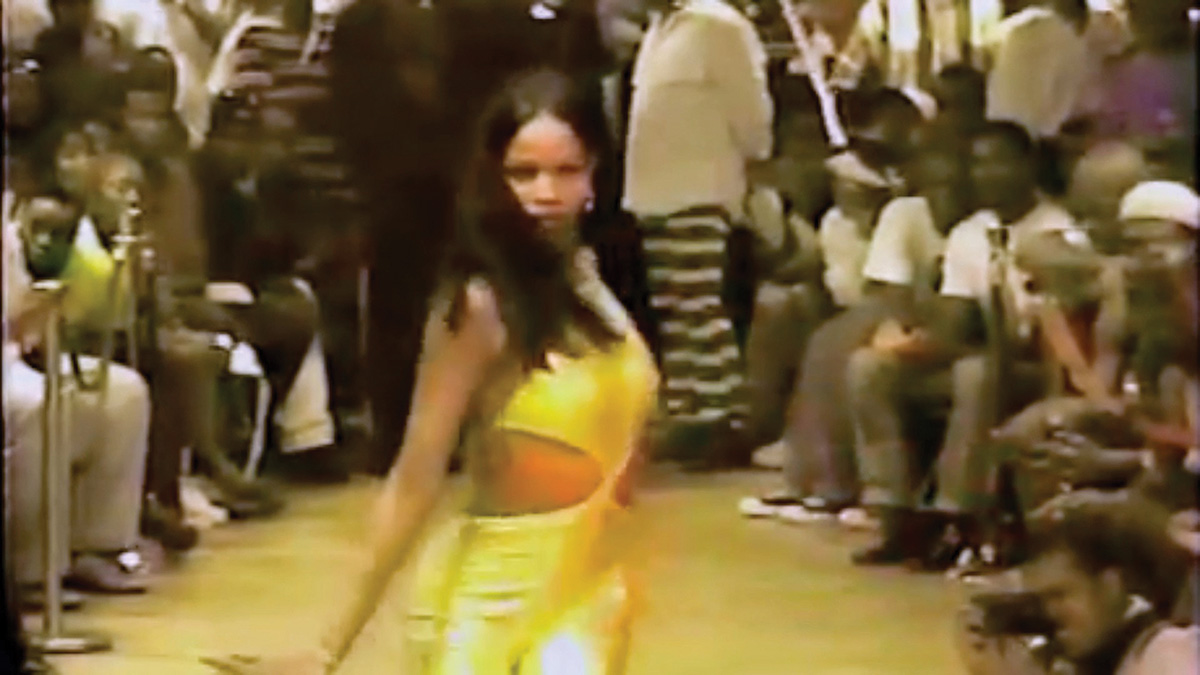

Mirelle Borra
Safe Space
Experimental doc. | mov | color | 10:0 | Netherlands, Germany | 2021
The visual component of the video ‘Safe Space’ is pieced together from countless YouTube clips of ballroom events from the early nineties—at a time the AIDS epidemic was surging in New York City. Originally a community created by trans and queer people of color in response to a society that marginalizes their existence. The ballroom scene provides a safe space for performers to act out various ways of gender expressions. For decades, the ballroom community has influenced pop culture, and it’s vocabulary has seeped into common parlance. ‘Safe Space’ is narrated by AI generated voices that recite contemporary experiences and statements of LGBTQ+ refugees that have been sourced from the internet. The confluence of image and sound seek to depict both the harsh plight of a minority within a minority and the creative resilience and sense of community that emerges from these experiences.
Mirelle Borra’s interest in urgent global subjects merges with her keen sense of aesthetic to create thought-provoking work. Using moving image, she engages with social and political topics to re-frame these matters in new ways. Mirelle seeks to examine structures of representation through a transnational perspective while staying in constant dialog with the context from which the work is derived. The main focus of her practice is where the personal and the political intersect. In 2017, she founded the online platform 6x6 project which is dedicated to the dissemination of artists’ moving image works, and to create an ever-growing network among peers. Her work has shown internationally in film festivals and exhibitions, including the 20th Millennium Docs Against Gravity (PL), 20th London Short Film Festival (UK), 29th Sheffield DocFest (UK), 19th Vienna Shorts Film Festival (AT), 67th International Short Film Festival Oberhausen (DE), 17th Athens Digital Arts Festival (GR), 3rd FRACTO Experimental Film Encounter, Berlin (DE), 39th Ars Electronica Festival, Linz (AT), and the 3rd Screen City Biennial, Stavanger (NO) among others. Mirelle was born in the Netherlands, and after living in New York City for many years, she is currently based in Berlin.
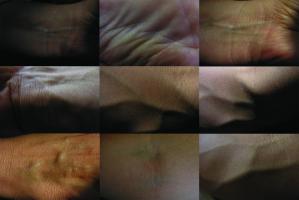

Ana Borralho, João GALANTE, Nishijima ATSHSHI
No body never mind, 003
Performance | dv | | 40:0 | Portugal, Japan | 2006
The desire to be remembered has always been a part of the human condition. Society has forever sought to devise a form of memory that would outlast our corporeal selves. The adaptation of binary, the universal language and cornerstone of the digital system, has afforded us yet another path towards attaining this most elusive of aspirations. Binary systems and their descendent technologies now permeate the entirety of our social strata. They coexist with us, in our hands, at all times, and in all places. We sample, organise, and archive, creating personal repositories of our recorded lives. We distribute these, our digitized memories, trading fragments of our most intimate experiences with strangers. Human memory is stored in machine memory, retrievable in an instant, while networks facilitate the juxtaposition and blending of these finite narratives. Do individuals inherently seek to place their personal accounts, each transient and subtly unique, within a universal context? Are the instruments we create to mediate this process intrinsically imbued with such underlying intentions? "Re_collection" is the product of one of our most ubiquitous technologies - the mobile phone. A captured moment, precious and instilled with personal significance, provides the exclusive source material for the artwork. The recorded sequence - stripped of resolution and apparent depth, has become de-personalised, reduced to a minimalist aesthetic that reveals archetypal forms and the inherent emotions they evoke. Through this purposeful paring back of detail, the divisions between personal and universal are questioned. It is a search to reveal the underlying 'truth' to these, our most intimate of recollections, which exist between dream and remembrance.
Ana Borralho and João Galante met while they were studying visual arts at AR.CO. They have been working together since 2002, and have created and performed the following pieces: Mistermissmissmister (2002), Glin Gló (2002), I Love You (2003), Girl Play Boy (2004), no body never mind, 001 (2004), no body never mind, 002 (2005), and no body never mind, 003 (2006). They are currently preparing, "the performance sexyMF". Since 2004, their works have been shown in several International Festivals: La Batie- Geneve, Switzerland; 100 Dessus Dessous - Paris, France; Escena Contemporânea- Madrid, Spain; Panorama de Dança - Rio de Janeiro, Brazil; Alkantara, Lisbon, Portugal.
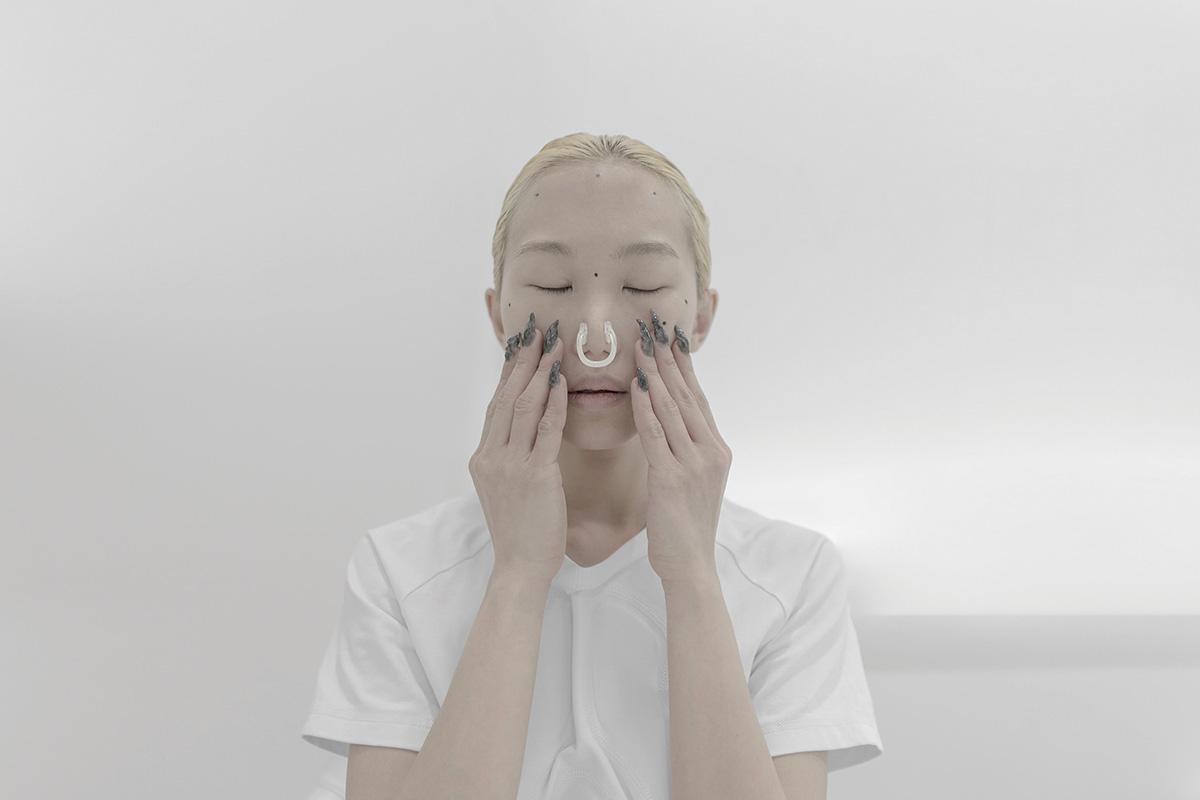

Mit Borrás
Hanaba
Experimental fiction | 4k | color | 10:0 | Spain | 2022
Hanaba belongs to a speculative future and lives isolated in a new cave with a heavenly aspect, an aseptic laboratory surrounded on the outside by an uninhabited natural environment where time seems to stand still. The protagonist of Hanaba, a term whose meaning comes from the scientific concept of "new mutant flower whose DNA has been isolated", transits between their human nature and their dream of transcending and merging with nature through technology. This idea takes shape during Hanaba's meditations where their recurrently dream of being a drone that crosses a forest like a ghost. We can see how Hanaba develope scientific studies devoted to biotechnology, geology and the meaning of conservation of human body. Progress becomes a new cult, mediated by nature through the ceremonial use of flowers, chants and the ingestion of psychoactive plants as a way to travel to a transhumanist transcendence and total adaptation to nature. A film created by Mit Borrás, with the art direction of Rachel Lamot, with script by Mit Borrás and Rachel Lamot, music by Daniel Vacas Peralta the fashion designs of Kim Rosario and Path by Janine Grosche, the special participation of Weixin Quek Chong as Hanaba and the production team.
Mit Borrás is a visual artist based in Madrid and Berlin. His work examines the relationship between human, nature and technology, their purpose of evolution and the idea of death and eternal life with a transhumanist perspective. He has developed a work complex that encompasses visions of a post-human state of consciousness. Its center of focus is based on the interconnectivity between biodiversity and technological progress. His work has been exhibited at Pompidou, Paris (2022), Art Dubai, UAE (2022), Hara Museum, Tokyo (2010), Exgirlfriend Gallery, Berlin (2016-21), Tick Tack Gallery, Antwerp (2021), The Wrong Bienale, Paris (2021), Harddiskmuseum, Paris (2020), Arebyte Gallery, London (2019), Dimora Artica, Milan (2018), Frontviews, Vienna (2019) Berlin (2018), Aleph Projects, Tel Aviv (2017), Biennial of Media Arts of Chile, (2017), Palacio Fernandini, Lima (2016), Museo de Bellas Artes de Chile (2017), Loop Barcelona (2010,15-19) and Transmediale, Berlin (2011) among others. He has directed the production of digital art festivals as independent curator, co-directed Fünf Galerie in Berlin (2010-14) and worked as coordinator of cultural projects at Instituto Cervantes in Berlin (2014). His work is represented in by House of Chappaz gallery and is member of the art collective Frontviews in Berlin.


Mark Boswell
The St. Petersburg Paradox
Experimental video | dv | color | 8:22 | USA | 2006
?The St. Petersburg Paradox was invented by the Swiss Mathematician Nicolas Bernoulli in 1713. The SPP describes a particular casino game (in a hypothetical St. Petersburg, Russia casino) that features a random variable with an infinite expected value. The game involves the flipping of a coin of which two things can happen: a) the coin lands on heads and the game is over rewarding the player with a small sum of money; or b) the coin lands on tails and the sum is doubled while the game continues until the coin lands on heads. However , to enter this game a player must pay the Casino an unreasonably large amount of money to start. The SPP is a classical situation where a gambler makes a naive decision theory (which takes only the expected value of winning into account) - a gamble that no rational person would make. SPP-the film-utilizes footage from Night of the Living Dead, Godard?s One Plus One, & Casino by M. Scorsese and through a hallucinatory re-montage draws a grim portrait of a Texas Wastrel?s interpretation of l?Etranger with a gut punch Dadaistic finale.? Dr. Benway
Mark Boswell studied art history, cinema theory, and film/video production at the American Center of Paris, France from 1986-1989 and Phillips College of Melbourne, Florida from 1990-92. He has presented experimental film works internationally in over 25 countries in museums, biennials, and film festivals, including The Transmediale Berlin (?03, 04, 07,) The 10th Biennial of The Moving Image, Geneva, Switzerland, The Avanto Media Arts Festival of Helsinki, Finland (03? 04? 06), The National Center of Contemporary Art, St. Petersburg, Russia, The Los Angeles Freewaves Video Biennial (Hammer Museum), Los Angeles, California, and the New York Video Festival at The Lincoln Center, New York, New York. In 2004, He was awarded the ?International Media Art Award? from the ZKM Museum of Karlsruhe, Germany.

Louise Botkay
Estou aqui
Experimental film | super8 | color | 7:0 | Brazil, Haiti | 2015
I`ve spent my childhood in Cap-Haitien, a city at the north of a half island of the Caribbean called Haiti. My life will always be inhabited by the memory and experience of this mysterious and warm(ardent???) place. I`m under the impression that everything i am comes from this light, this wind, this land, this growing up creole. "I`m here" is an ode to childhood time that accompagnies us forever
Louise Botkay is a photographer and film maker, utilizing super 8,16 and 35mm film, video, cell phone that are developed artisanally by the artist herself. She worked in several countries like Haiti, Congo, Niger, Chad, Holland, France and Brazil. Her films were selected and recipients of awards in Movie Festivals (Oberhausen, Fid de Marseille, Vidéobraisl, São Paulo Movie Festival, Brive Festival, Anger 1er Plan Festival, Fespaço, Recife International Window Movie festival, among others). Her film “Mammah” was exhibited in the Christopher Grimes Gallery (Santa Monica, Ca.), at theYerba Buena Center for the Arts (San Francisco, Ca.), Centre George Pompidou (Paris, France) and MAM – Museum of Modern Art (Rio de Janeiro, Brazil). She received the prize scholarship “Villa Hors les Murs” from the Institut Français, to develop her more recent work, at Acre with the nation Hunikui. She lives today in Rio de Janeiro and works between Brazil and France.
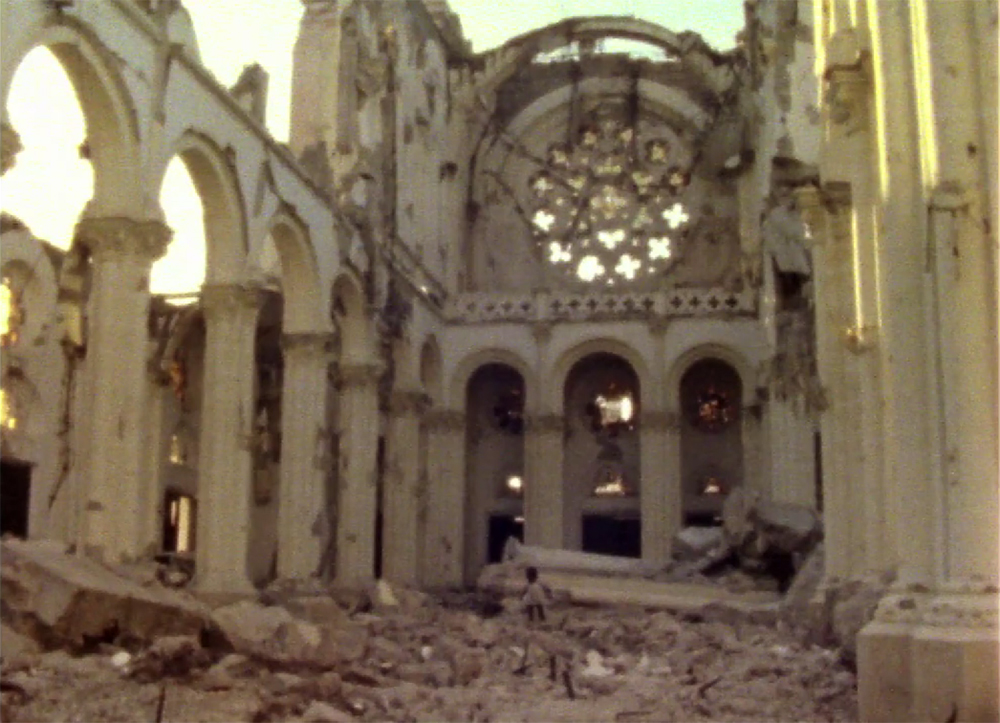
Louise Botkay
Vertières I,II,III
Experimental film | super8 | color | 9:36 | Brazil, Haiti | 2014
Vertières est le nom d'un quartier de la ville du Cap-Haïtien où, en 1803, a eu lieu la grande bataille qui a fini par expulser l'armée de Napoléon de l`île, Haïti à ce moment devient le premier pays au monde a conquérir son indépendance face aux puissances colonialistes.
Formation: La FEMIS, école nationale du cinéma-France, (diplômée juin 2006) Faculté de Design à Rio (diplômée en 2000) Bourse Aprofundamento-Parque Lage RJ (2014) Louise Botkay réalise des films utilisant autant le télephonne portable, que la vidéo, les pellicules super-8, 16 et 35 millimètres qui souvent sont développées "artisanalement". Travail nomade,elle réalise des films en Haïti, au Congo, Niger, Tchad, Hollande, Françe et Brésil.. Ses films on été sélectionnés et primés en festivals comme le Festival 1er Plan d`Anger, le festival de Brive, le festival Janela international de Recife, le festival de curtas de São Paulo, entre autres. Son film "Mammah" a été exhibé à la Galerie Christopher Grimes (Santa Monica), au Yerba Buena Center for the Arts (São Francisco) et au MAM-Rio de Janeiro en 2013, dans l'expo collective SP8. Elle a reçu la bourse "Villa Hors les murs", de l'Institut Français, pour produire son plus récent travail réalisé en Acre, Amazonie Brésilienne avec le peuple Hunikui. Elle vit à Rio de Janeiro et travaille entre le Brésil et la France.
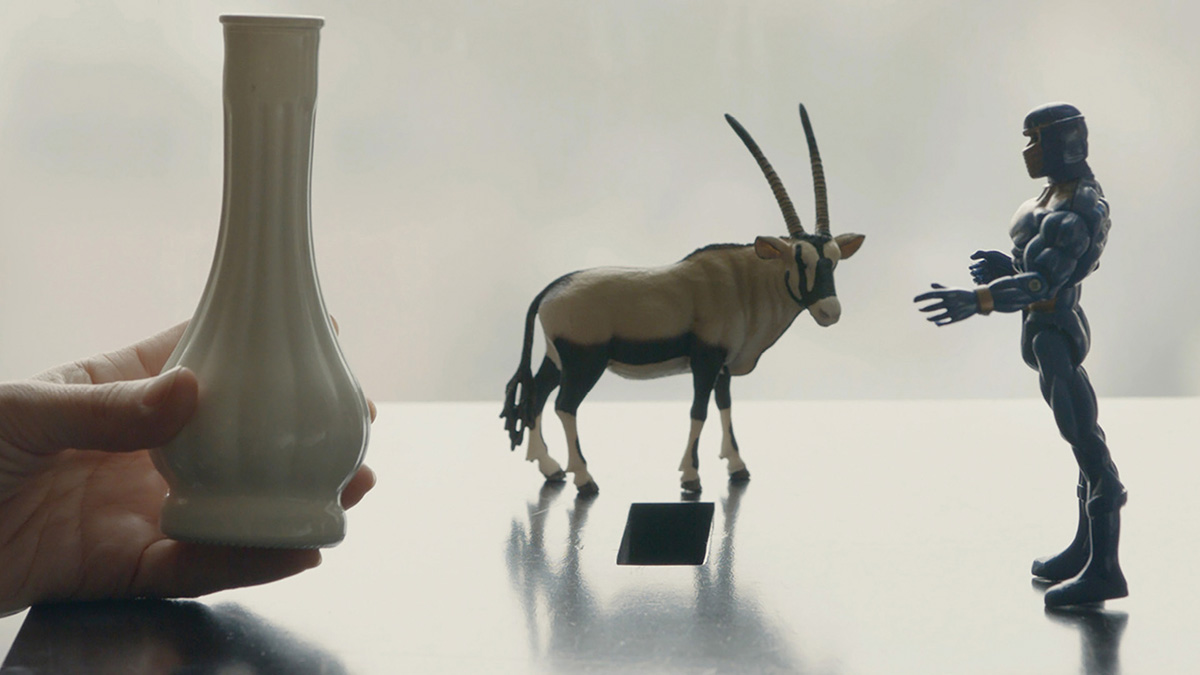

Eliane Esther Bots
In Flow of Words
Documentary | dcp | color | 22:15 | Netherlands | 2021
In Flow of Words follows the narratives of three interpreters of the International Criminal Tribunal for the former Yugoslavia. They interpreted shocking testimonies from witnesses, victims and perpetrators, without ever allowing their own emotions, feelings and personal histories to be present. Contrary to their position at the tribunal, this film places their voices and experiences center stage.
Eliane Esther Bots (1986, The Netherlands) graduated cum laude from the Master of Film at the Netherlands Film Academy in Amsterdam. Her films have been screened at ‘IDFA’ (NL) ‘Berlinale’, Berlin (DE), ‘Cinema du Reel’, Paris (FR), ‘New York Film Festival’ (USA), ‘International short film festival Oberhausen’ (DE), ‘Go Short’, Nijmegen (NL), Kassel Dokfest (DE). She works as a lecturer ‘Moving image’ at the University of the Arts in Utrecht (NL).

Bottomley Bottomley, Johnny Hourigan
Everybody Says It's All In Your Head
Experimental film | hdv | color | 18:4 | United Kingdom | 2015
Everybody says is all in your head is a collaboration between Clare Bottomley and Johnny Hourrigan unfolding as a video diary over one year. Encouraged by Clare to make a portrayal of himself, Johnny gets familiarised into the process of filmmaking and participate fully in all the aspects that define such a production from the choice of the camera to the practice of editing. While he acquires the technical knowledge, Johnny gets full agency in testing and controlling the medium of representation. With a camera that mediates his contact with the outside world, Johnny immerses himself into a journey of self-discovery gaining the confidence to address the unaddressed his condition of mild-autism and the challenges he faces. Through a non-hierarchical and non-didactic approach, Clare Bottomley reveals the potential of learning to create an authentic space of participation and empowerment for subjects whose voices have been marginalised.
Clare Bottomley lives and works in London. With a practice that incorporates video and photography, her work investigates self-portrait and performance of the self. She studied for an MA in Photography at the Royal College of Art, London, 2011-2013 and has been working as an art educator for six years. Johnny Hourigan is now a young man studying Media Production at college in south London and developing his independent projects. Johnny sees process of creating the personal view point for the film as ‘...with all the memories remained in the camera, what the camera does not capture are memories in ourselves.’
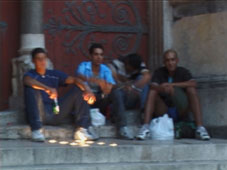

Gaëlle Boucand
Arles
Experimental video | dv | color | 1:28 | France | 2004
A serie of four portarits of young boys is shot on close frame. The camera, floating, passes from one visage to another visage, stirring up thusly, from one to another, a feeling of proximity, almost a shared intimacy. Then, the frame goes wider to a general and final iview. The group appears wholly, sitting on the steps in front of a church. The image forms nothing else than a common portrait.
Gaëlle Boucand is born in 1980 in Paris where she works and lives currently. She graduated from the Ecole Nationale des Beaux Arts of Paris in 2005. The same year, she takes part in group exhibition notably, "Attentifs Ensemble", organised by Christian Bernard at the contemporary art space Attitudes, in Geneva, Switzerland, at the "Premiere vue", on Michel Nuridsany's invitation at the Paysage Retz in Paris, also at "Nomad's land" at the Poudrière in Bayonne. In 2004, she receives the Collin-Lefranc scholarship for a six-month residency at the Cooper Union School in New York (USA). She takes part in the exhibition "Tracks" at the Hewitt Gallery. In 2003, she collaborates to the exhibition "Stade de France" currated by Jen-Marc Bustamande at the Italian-Swedish Foundation of Venice (Italia), in mirror with the Biennale. Many of her films have also been programmed for some video festivals such as "Signes de Nuit", at the Le Balzac cinema in Paris, "Bandit-mages" in Bourges and "Kasseler" documentary film and video festival in Kassel (Germany).
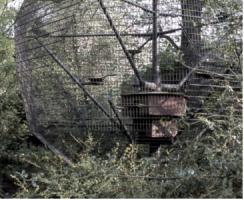

Gaëlle Boucand
Berliner Bildstörung / Zoologischer Garten
Experimental video | dv | color | 3:12 | France, Germany | 2006
Berliner Bildstörung / Zoologischer Garten est une vidéo construite à partir d`images d`un zoo déserté par ses animaux. Ces images mettent en avant les paysages artificiels du zoo et ses décors spécifiques. Elles surgissent du noir telles des interférences scandées par des réminiscences de sons d`animaux.
Gaëlle Boucand est née en 1980 à Paris. Elle bénéficie actuellement d`un atelier-résidence du BBK à Berlin et participe également au Pavillon, laboratoire de création du Palais de Tokyo à Paris. Son travail a récemment été exposé entre autres au Palais de Tokyo, au Luggage Store de San Francisco, ainsi qu`à Berlin (Air Garten, Kolonie Wedding), à Genève (Attitudes), à Montreuil (Les Instants Chavirés) et à Paris (Kadist Art Foundation, Bétonsalon, La Générale, Première vue, Jeune création). Plusieurs de ses films ont également été programmés dans le cadre de festivals vidéos tels que Les rencontres Internationales Paris-Berlin-Madrid (cinéma l`Entrepôt, Paris), Signes de nuit (cinéma le Balzac, Paris), Bandits-mages (Bourges) et le Kasseler Dokumentarfilm und Videofest (Kassel).

Gaelle Boucand
Voin
Documentary | mov | | 30:0 | France, Bulgaria | 0
Voin a grandi dans la Bulgarie communiste. Après vingt ans passés en Europe de l’Ouest, il retourne à Sofia sur les lieux de son enfance et de son adolescence. Son portrait se compose de lieu en lieu, de souvenir en anecdote. Du cou coupé du coq qui voulait l’énucléer aux rites d’initiation sexuelle dans la maison interdite, Voin campe les saynètes d’un roman d’apprentissage bataillien, cru et souverain. En racontant ses travestissements, il revendique aussi l’exercice d’une liberté, d’une agilité à se mouvoir dans le cours de l’Histoire. Voin l’imite, en hérite, et c’est l’Histoire qui transparaît dans une tonalité rafraîchie, une vitalité excentrique et mineure, loin des lieux communs du récit majoritaire. Et quand, penché sur le vide au 19e étage de la tour Tolstoï, le trentenaire contemple les barres d’immeubles du quartier Espoir de son enfance, son vertige est contagieux, et la sensation (dé)grisante. (Cyril Neyrat)
Gaelle Boucand est artiste et cinéaste. Sa pratique se concentre depuis dix ans sur la réalisation de documentaires au sein desquels les questions du portrait et du dispositif filmique tiennent une place centrale. En 2010, son premier film, "Partis pour Croatan", sur une communauté de raveur, est exposé, notamment au Musée d'Art Moderne de la ville de Paris (France). Son deuxième film, "JJA" — premier volet d'une trilogie — dresse le portrait d'un exilé fiscal en Suisse. Il reçoit la mention du Grand Prix de la compétition française au FIDMarseille (France) en 2012, ainsi que le Grand Prix expérimental au festival Coté Court de Pantin (France), et est également diffusé au sein de multiples institutions artistiques internationales (Kunsthalle Mannheim (Allemagne); MAST – Manifattura di Arti, Sperimentazione e Tecnologia Bologna, Bologne (Italie); Kunstwerk Carlshütte, Büdelsdorf (Allemagne). Depuis 2014, elle enseigne régulièrement à l'isdaT – Institut supérieur des arts de Toulouse (France) et réalise des films avec différentes écoles. En 2015, elle termine "Changement de décor", deuxième volet de la trilogie initiée avec "JJA", présenté notamment aux États généraux du film documentaire de Lussas (France), et cofonde la société Elinka Films. En 2020, "J.A" — qui vient clore la trilogie — est en compétition à Cinéma du Réel, Paris (France), et son dernier film, "Voin", portrait d'un homme à travers son retour en Bulgarie, reçoit le prix Alice Guy au FIDMarseille (France).
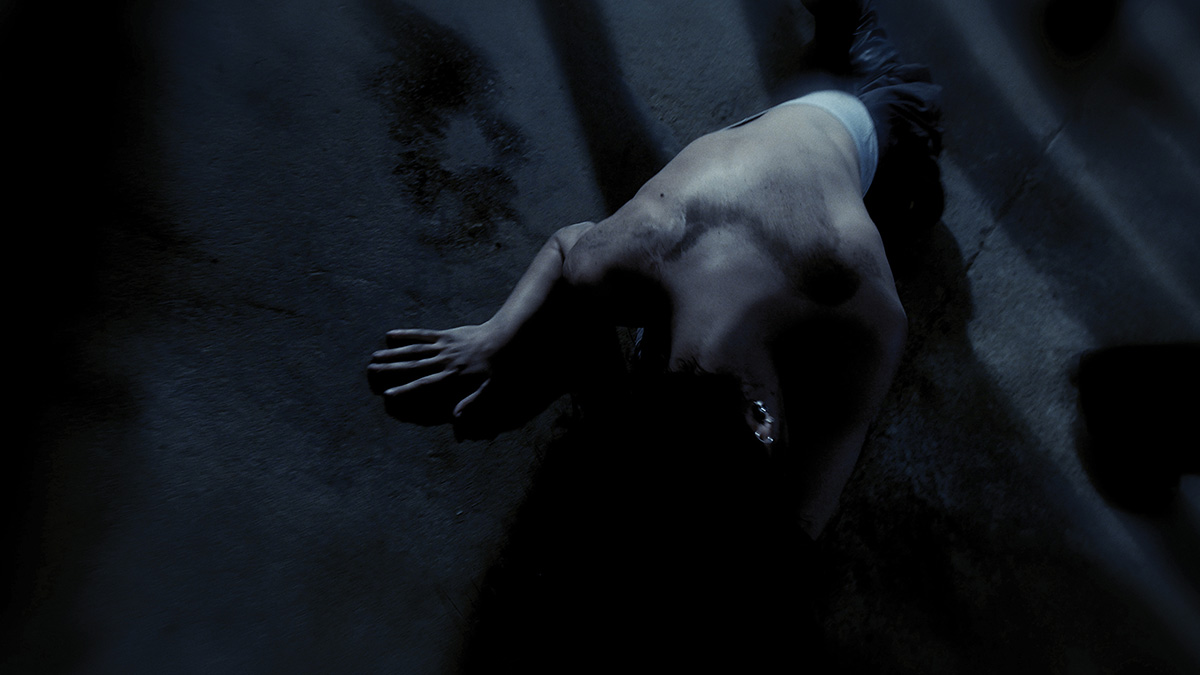

Emma Boudon
RAGE THEY DESERVE
Experimental video | 4k | color | 6:6 | France | 2022
This film is halfway between a contemporary dance piece and an experimental film. In this second collaboration with the dancer Hava Hudry, I wanted to explore the place of the female body in public space, and in this particular case the night-time and clubbing scene, which can be a highly ambivalent place (both a brave space and a dangerous one, particularly for women or people perceived as women). The dancer's relationship with the floor is essential; she shocks, straightens, arches her back, breaks her movements and crawls. It is both a liberating trance and a primal expression of internalised violence that eventually explodes. Hava's performance takes the viewer back to the relationship they have with their own body, and to the judgements they have made about the bodies of others, particularly those of sexed people (women or people perceived as women). The projection is accompanied by a perfume whose saline and metallic notes are reminiscent of body odours that are as attractive as they are repulsive. This multi-sensory mix occupies the entire space and invites the spectator to join in the party.
Emma Boudon studied at the École des Beaux-Arts in Paris, where her artistic practice combines video, installations and photography. She graduated from the Paris-Sorbonne with a degree in literature and went on to complete a Bachelor's degree in Photography and Video at the Ecole des Gobelins. Her work focuses on the presence of women, or women perceived as women, in the public space. In her latest film/installation, RAGE THEY DESERVE, she bears witness to the violence that manifests itself in various collective spaces, particularly the world of nightlife. She describes it as a transgressive 'brave space' where violence and freedom collide. This ambiguity is reflected both in the choreography, which combines liberating trance and explosive anger, and in the environment itself, a space for letting off steam, which can quickly shift from joy to insecurity, from light to darkness. This obsession with partying has led him to make a film about the Seoul underground scene.

Halida Boughriet
Des intégrations
Video | hdv | color and b&w | 16:7 | France | 2015
Dans le film « Des intégrations» , La mémoire collective officielle et la mémoire politique se figent, à la limite de l’amnésie voire de la négation. C’est par le biais d’un univers poétique mais désenchanté que le film se propose de soulever des enjeux touchant à la jeunesse contemporaine. Les personnages jouent sur une série de correspondances qui érigent le film au rang de transfert visuel.
Artiste française et Algérienne . Anciennement diplômée de L’Ecole Nationale Supérieure des Beaux Arts de Paris et du programme d’échange de la SVA section cinéma à New York jusqu’en 2005. Halida Boughriet explore un large éventail de médias à travers ses oeuvres . Elle accorde une place centrale à la performance, dont les structures de son langage artistique lui donne une variété de formes. Au carrefour d’une préoccupation esthétique, sociale et politique, ses pièces s’efforcent de saisir les tensions dans les relations humaines mis en évidence par la société . Le corps est omniprésent , comme un instrument de geste poétique.
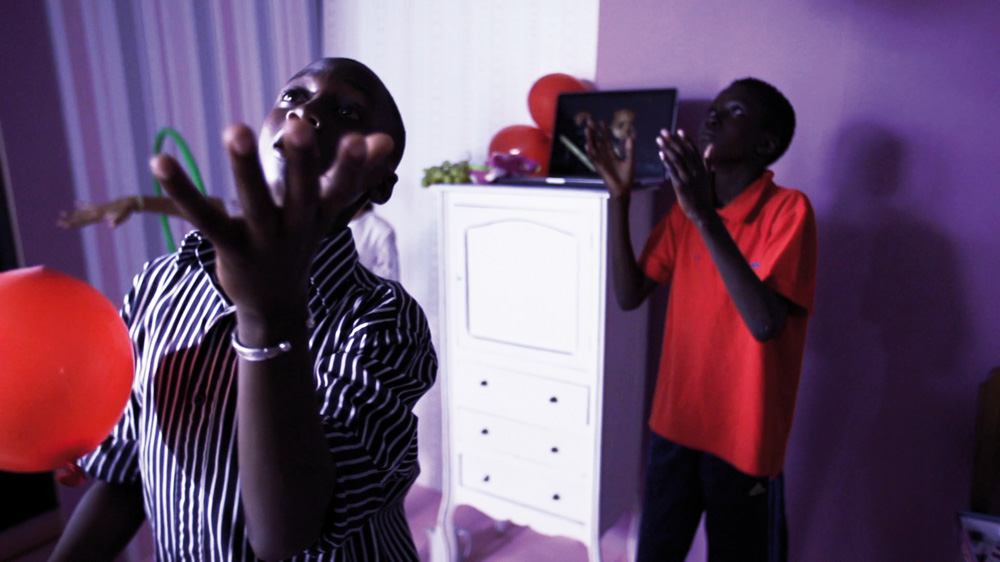
Halida Boughriet
pandore
Video | hdv | color | 8:44 | France | 2014
La vidéo Pandore se concentre sur un groupe social, enfants en marge du reste de la société française. Portant un regard sombre et inquiétant sur la réalité des rapports humains et aussi du système médiatique à la violence qui en découle. Les protagonistes sont invités à se dévoiler, témoignant de leurs histoires qui renvoient à l’image d’un passé et d’un présent "Mythe ou Réalité". Ils se mettent en scène dans des positions et postures artificielles, filmées par des séquences au ralenti extrêmement fluides. Enfin, La lumière travaille à inviter le spectateur à une curieuse contemplation dans l’intimité d’un espace clos et artificiel, dégageant une atmosphère irréelle et anormale.
Halida Boughriet est une artiste française d’origine algérienne. Anciennement diplômée de l’École nationale supérieure des beaux-arts de Paris et du programme d’échange de la SVA section cinéma à New York jusqu’en 2005. Halida Boughriet explore un large éventail de média à travers ses œuvres. Elle accorde une place centrale à la performance, dont les structures de son langage artistique lui donne une variété de formes. Au carrefour d’une préoccupation esthétique, sociale et politique, ses pièces s’efforcent de saisir les tensions dans les relations humaines mises en évidence par la société. Le corps est omniprésent, comme un instrument de geste poétique expérimental. Ses œuvres font partie de la collection «Nouveaux Médias» du Centre Pompidou (Paris) et du musée MAC / VAL (Vitry -sur-Seine). Ses travaux ont été présentés dans de nombreuses expositions dont Elles@centrepompidou (2011, Paris), y compris au FIAC d’Alger (2011, Algérie), à l’Institut du Monde Arabe, (2012, Paris) pour l’exposition «Le corps découvert». En 2013, au Musée d’Art et d’Histoire de Saint-Denis (Seine-Saint-Denis) pour «Chapelle vidéo # 4». Plus récemment, elle participe à «Vidéo et après» au Centre Pompidou et à la Biennale internationale de Dak’Art 2014 (Dakar, Sénégal).
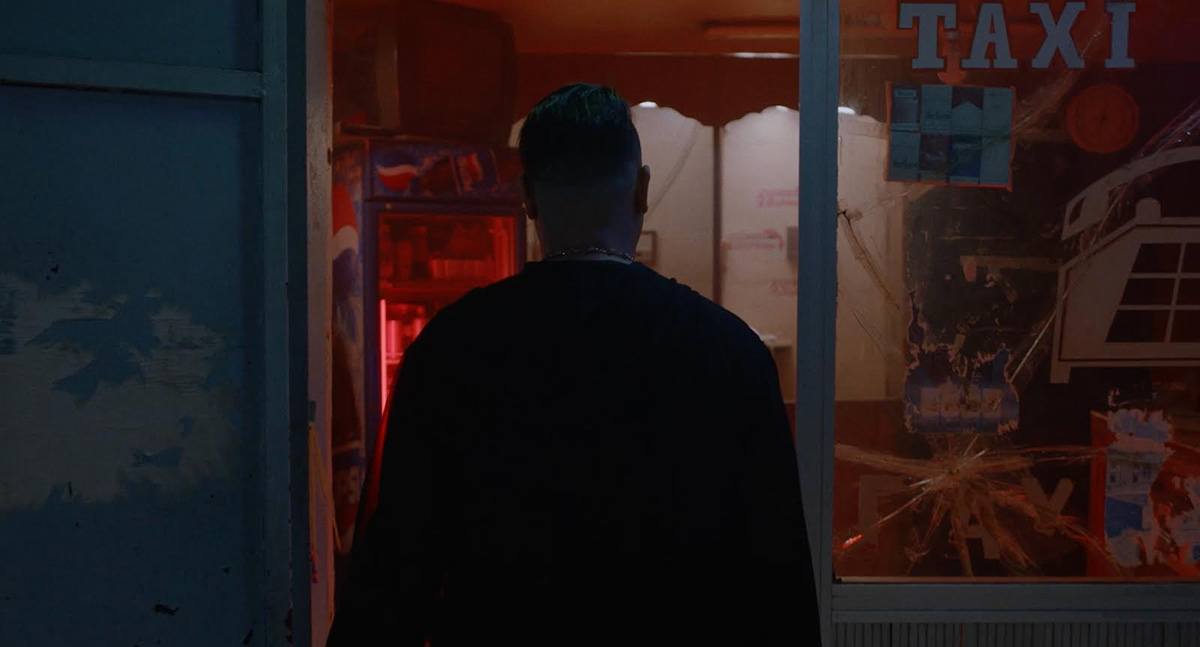

Ghyzlène Boukaila
#31# (Unknown call)
Experimental fiction | hdv | color | 16:16 | Algeria, France | 2021
Off the coast of a world in reconstruction, a voice whose source is unknown overhangs the city and sounds like an injunction. In resistance to this authoritarian diction, a new voice emerges. Cheikh Morad Djadja makes his way through this universe, he must go to the Taxiphone and leave his own encrypted message. "Appel masqué" is a song composed by Cheb Abdou in 1993, during the period of the black decade in Algeria. Like many of his songs, Cheb Abdou wrote and performed them under constant threat. Through his music, he opened a field of identity expression and gender affirmation, the etymology of the word Raï takes all its meaning. By returning to the traces of the birth of raï, Oran, I met Cheikh Morad Djadja a personality of this environment and successor of Cheb Abdou, it was a real immersion in the community of singers and musicians raï.The film was built around the taxi-phone representing this non-place of anonymous telecommunication and the impossibility of maintaining a message, an opinion within a contemporary society. Echoing the lyrics of the song ''Appel masqué'' by Cheb Abdou, "#31# (Unknown call)" is an approach somewhere between documentary, fiction and performance, where Cheikh Morad Djadja leads us on an existential quest, in a world in perpetual reconstruction, where this non-place allows him to leave a masked vocal message about his trans-identity.
Ghyzlène Boukaïla is a multimedia artist and director born in 1993 in Algiers. She lives and works between Algiers and Lille. Her artistic approach and sensitivity crystallizes in the breasts of a family of Algerian revolutionaries. Exploring certain issues related to post-colonialism, her approach explores new narratives related to socio-political and digital (re)evolutions by situating her practice at the interface of documentary/performance and post-human digital narratives.


Angus Boulton, Boulton
'08/26'
Documentary | dv | color | 31:0 | United Kingdom, Germany | 2007
The central subject of ?08/26? is the frequently unseen yet all pervading Cold War air conflict, one easily imagined, endlessly rehearsed for and occasionally played out in the skies over Europe. Taking a fixed, frequently low viewpoint, the inherent visual aesthetics of military airbases provide an ambiguous backdrop to the unfolding chronology. Initially the film surveys many of the recognisable structures standing idle amidst the overgrown topography that remains at one Soviet location, infused with the ambient sounds and memories of an earlier time. Meditative sequences of redundancy at Wittstock, north of Berlin, are juxtaposed with scenes of activity from two operational NATO airbases in East Anglia. In contrast, here we witness military personnel engaged in routine exercises representing the present, now training against a less identifiable enemy. Separated by almost two decades, the practice and procedures are similar, the Cold War era aircraft and routine manoeuvres much the same. Sequences overlap portraying different times and locations, exploring the similarities and differences between occupation and emptiness, scenes that in their entirety create a complex visual and aural impression. Essentially, the piece resembles a slow exercise in objective observation, a film researching time and space, the present, the recent past and our uncertain future.
Born York, England, 1964.

Mohamed Bourouissa
J.M Mondésir
Experimental doc. | hdv | color | 24:0 | France | 2012
A housing project that seems more like an amphitheater, bears witness to a sacrifice. In 2002, Georges Mondesir dies after an encounter with the police. He`s crazy, or just simple-minded. When face to face with the police, Mondesir is the Other. It?s the underlying ancestral struggle between this duo that interests Alice Colomer. It never becomes a documentary about death. It?s a ballet from which only the camera is free to escape. Slow motion defies realism, several perspectives intertwine ? these bring about the impression that something had happened.
Alice Colomer-Kang born in 1985 in Paris, she lives and works in Paris. She graduated from ?Ecole Nationale supérieure des Beaux Arts de Paris? in November 2011, and studied at the Central Academy of Fine Arts in Beijing (China). 2012 Group exhibition at la Saline Royale d?Arc-et-Senans, Tranches de carré sur Tranches de cerles (ENSBA-ENS), with Lekh Lekha installation. 2011 Paris screening of One World One Dream One People, in the Festival « les nuits photographiques ».. 2007 Group exhibition at CNAM of Paris les visites dessinées.


Mohamed Bourouissa
Temps mort
Experimental fiction | dv | color | 18:0 | France | 2009
It is about a correspondence between two individuals, one who is locked up and the other who is in prison. All film constructs on this exchange of text (sms), pictures and words. The film begins with the installation of film process (in some way, the beginning film tells The film begins with the installation of film process) to become little by little a film which questions the notions of freedom and imprisonment.
Mohamed Bourouissa was born in Blida in Algeria. He lives and works in Paris. He is currently student of Studio National des Arts ? Le Fresnoy. He graduated at the Ecole Nationale Superieure des Arts Decoratifs de Paris in photography and has been studying visual arts at La Sorbonne Paris 1 (MA). Some solo shows were set up in the Centre culturel de Correios, in Rio de Janeiro in Brésil, at the Galerie des filles du Calvaire, at Breda Photo 2008, Pays-Bas, at the Site Gallery, Sheffield in England, at the Pauza Galerie, in Cracovie in Pologne. His work has been part of number of exhibitions in the world, including the Biennale Photographie et Architecture in La Cambre, Bruxelles, Belgique, at the contemporary art biennale of Alger, Algeria, at the New Museum of contemporary art, New York, and at the Deutsches Historisches Museum, Berlin, Germany. His work has been part of several public collections: the Cité nationale de l?Histoire de l?immigration, Paris, the Fonds national d?art contemporain, France, the Galerie du Château d?Eau, Toulouse, France, the Finnish Museum of Photography, Helsinki, Finlande.